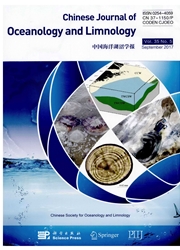

 中文摘要:
中文摘要:
Perfluorooctane sulfonate (PFOS ) 在最近的年里有关沾染物作为大多数之一出现了。这研究试图在 zebrafish (Danio rerio ) 在精子生存能力, kinematics 和授精成功上调查 PFOS 的尖锐毒性效果。精子在包含 PFOS 集中(0, 0.09, 0.9 和 9 mg/L ) 的一个范围的水的媒介被激活。暴露于不同 PFOS 处理的精子的生存能力和 kinematics 在激活以后在 20, 40, 60,和 80 s 经由帮助计算机的精子分析(房屋) 被估计。PFOS 暴露减少了能动精子,曲线的速度(VCL ) ,和吝啬的尖排水量的百分比(疯) 精子,但是没在直线的速度(VSL ) 或尖路径速度(VAP ) 上显示出影响。而且,在授精成功的重要减少在精子被观察暴露于 0.9 mg/L PFOS 或更多。这些调查结果显示在自然水的环境的那 PFOS 污染可以是一个潜力威胁到鱼的成功的复制。
 英文摘要:
英文摘要:
Perfluorooctane sulfonate (PFOS) has emerged as one of the most concerning contaminants in recent years. This study aimed to investigate the acute toxicity effect of PFOS on sperm viability, kinematics and fertilization success in zebrafish (Danio rerio). Sperm were activated in aqueous media containing a range of PFOS concentrations (0, 0.09, 0.9 and 9 mg/L). Viabilities and kinematics of the sperm exposed to different PFOS treatments were assessed via computer-assisted sperm analysis (CASA) at 20, 40, 60, and 80 s after activation. PFOS exposure decreased the percentage of motile sperm, the curvilinear velocity (VCL), and the mean angular displacement (MAD) of spermatozoa, but showed no influence on the straight- line velocity (VSL) or the angular path velocity (VAP). Furthermore, a significant decrease in fertilization success was observed in spermatozoa that were exposed to 0.9 mg/L PFOS or more. These findings indicate that PFOS pollution in natural aquatic environment may be a potential threaten to successful reproduction of fish.
 同期刊论文项目
同期刊论文项目
 同项目期刊论文
同项目期刊论文
 Trace analysis of quinolone and fluoroquinolone antibiotics from wastewaters by liquid chromatograph
Trace analysis of quinolone and fluoroquinolone antibiotics from wastewaters by liquid chromatograph Effects of p,p '-DDE exposure on gonadal development and gene expression in Japanese medaka (Oryzias
Effects of p,p '-DDE exposure on gonadal development and gene expression in Japanese medaka (Oryzias Reproductive Inhibition and Transgenerational Toxicity of Triphenyltin on Medaka (Oryzias latipes) a
Reproductive Inhibition and Transgenerational Toxicity of Triphenyltin on Medaka (Oryzias latipes) a Trace analysis of androgens and progestogens in environmental waters by ultra-performance liquid chr
Trace analysis of androgens and progestogens in environmental waters by ultra-performance liquid chr Occurrence of Androgens and Progestogens in Sewage Treatment Plants and Receiving River Waters: Comp
Occurrence of Androgens and Progestogens in Sewage Treatment Plants and Receiving River Waters: Comp Effects of chronic exposure to nonylphenol on locomotor activity and social behavior in zebrafish (D
Effects of chronic exposure to nonylphenol on locomotor activity and social behavior in zebrafish (D Determination and Occurrence of Retinoic Acids and Their 4-Oxo Metabolites in Liaodong Bay , China ,
Determination and Occurrence of Retinoic Acids and Their 4-Oxo Metabolites in Liaodong Bay , China , Occurrence and Source Apportionment of Sulfonamides and their Metabolites in Liaodong Bay and the Ad
Occurrence and Source Apportionment of Sulfonamides and their Metabolites in Liaodong Bay and the Ad Trophic dilution of polycyclic Aromatic Hydrocarbons (PAHs) in a marine food web from Bohai Bay, Nor
Trophic dilution of polycyclic Aromatic Hydrocarbons (PAHs) in a marine food web from Bohai Bay, Nor 期刊信息
期刊信息
